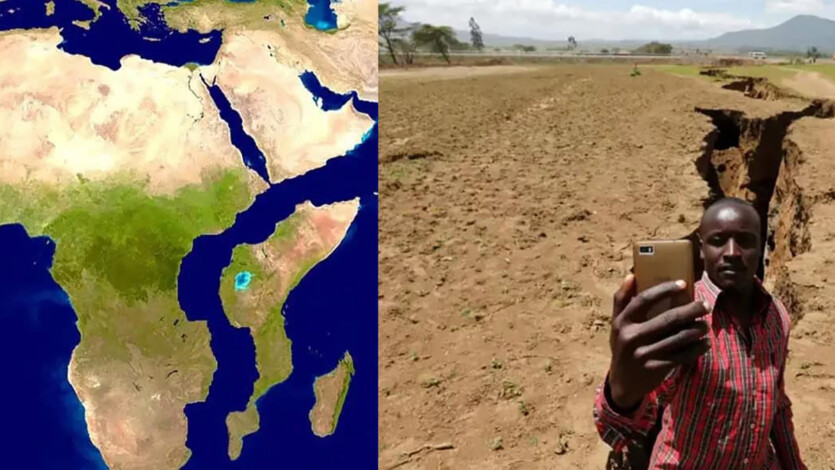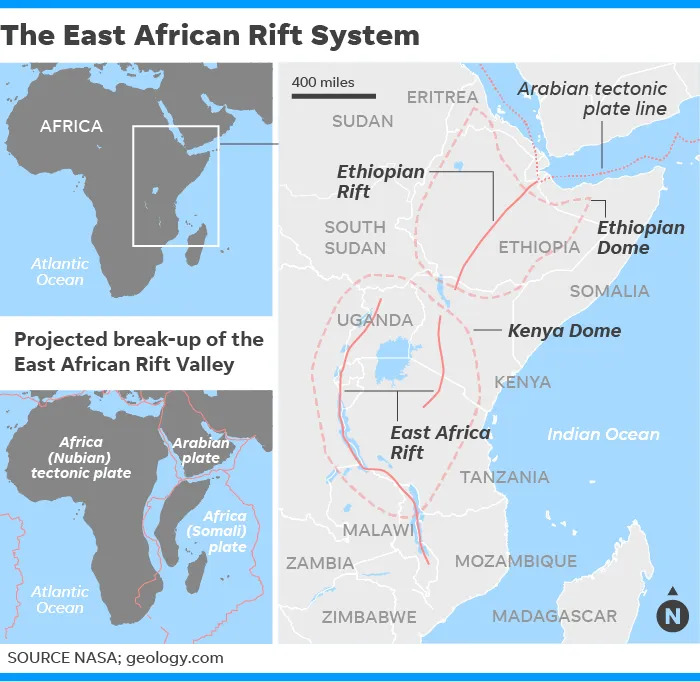
In East Africa, tectonic faults are slowly splitting the continent, and in millions of years a new ocean may form at the site of the rift.
The Afar region of East Africa is considered one of the hottest places on Earth. It is located onat the junction of three tectonic plates — the Nubian, Somali, and Arabian plates, which are gradually moving apart. This process, known as riftogenesis, gives scientists a unique opportunity to see how separation of continents.
«It is the only place on Earth where you can study how a continental rift becomes an oceanic rift», — explains Christopher Moore of University of Leeds.
The scientist uses satellite radar to monitor volcanic activity in the region. The Afar region is home to The East African Rift Valley is a huge fault in the earth’s crust that stretches across Ethiopia and Kenya. In 2005, a 55-kilometer-long crack opened in the Ethiopian desert. According to information According to National Geographic, this crack is more than 15 meters deep and more than 20 meters wide.
«This sharp split was equivalent to several hundred years of tectonic plate movement in just a few days. We are trying to understand what is the straw that breaks the camel’s back», — indicates geophysicist at Tulane University Cynthia Ebinger.
Her research showed that the process of Riftogenesis does not always proceed smoothly. It can be accompanied by sudden explosive events, caused by a sharp increase in pressure from the rising magma. This eventually leads to cracking of the Earth’s crust.

Over time, the cracks will widen and water will flow into the fault The Gulf of Aden and the Red Sea. This will divide Africa into two individual continents and create a new ocean. The smaller continent would include the territory of modern Somalia and parts of Kenya, Ethiopia, and Tanzania, and the larger continent would include the rest of Africa.
«A similar rift once eventually separated the African and South American continents to form the Atlantic Ocean, and the East African rift may be an early stage in this process. The process is simply very slow and takes millions of years», — believes geologist at Arizona State University Christy Till.
GPS devices allow researchers to measure the movement of tectonic plates with impressive accuracy GPS measurements can be used to measure the speed of movement with an accuracy of several millimeters per year.
The Arabian plate is moving away from the Nubian and Somali plates at a rate of about 2.5 cm per year. At the same time, the African plates diverge somewhat more slowly — at a rate of 1.5 to 0.5 cm per yearAs the plates move apart, material from the Earth’s interior rises to the surface, forming new oceanic crust.
«We can see that the oceanic crust is beginning to form, as it is markedly different from the continental crust in its composition and density», — says Christopher Moore.
Scientists estimate that the Afar region will be completely flooded in 5-10 million years. When this happens, the Gulf of Aden and the Red Sea will pour into the rift, creating a new ocean basin and turning the Horn of Africa into a separate small continent. Today, the Afar region remains one of the harshest places on Earth. The daytime temperature here reaches 54°C, and at night it does not drop below 35°C.
Source: ZMEScience

Spelling error report
The following text will be sent to our editors: